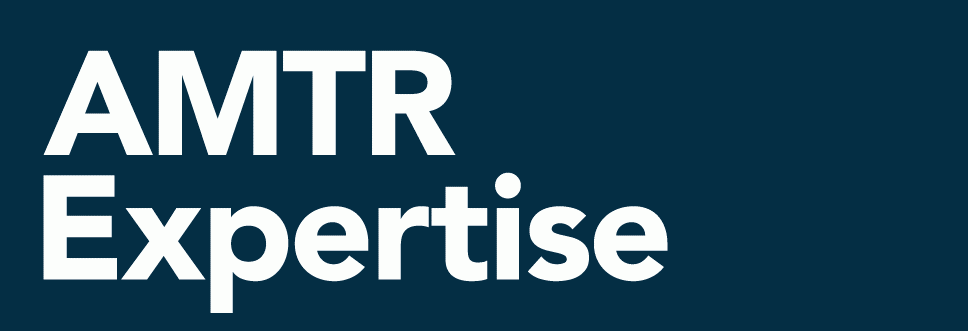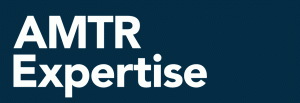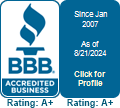Many shippers might think rules tariffs do not apply to freight rates. Sometimes they contain accessorial charges that end up on invoices. However, these rules that rail transportation carriers use are also there to help you as the shipper!
These documents are very often overlooked as a whole when programming rates or reviewing invoices for payment. If a transportation and logistics team is not well-versed in carriers’ rules tariffs, then they are missing out on some possible opportunities to prevent overpayments.
What makes rules tariffs problematic, is that shippers will not see these documents cited on their invoice for review; one would have to just know they exist. This may seem hard to believe, but here are some easy examples: general absorption of switch charges, standard axle rate application for weight restricted stations, alternation of rates based on weight, free time on demurrage, when a tank car is considered empty, exceptions for switch limit stations, railroad error movements, and many more. Rules may also be located in the front section of a tariff, often overlooked by transportation personnel. In addition, there are general rules tariffs, such as the Railway Accounting Rules published by the Association of American Railroads and various publications provided by RAILINC.
This is where AMTR makes the difference for your company, by having this knowledge base and being able to know when to apply the rules to save you money. Call us today to get started. It costs you nothing to call but will cost you a lot if you do not!
Since the Surface Transportation Board (STB) Reauthorization Act of 2015, we have seen a resurgence of new activity that will ultimately benefit shippers. From addressing issues such as public online access to Ag and Fertilizer tariffs, to proposing new competitive reciprocal switching rules, we are excited to see what changes are in store for the future. For years, AMTR has been involved in voicing shipper concerns with our clients regarding their relationship with carriers and published tariff contradictions to current statutes. The latest STB communication about the proposals to revoke certain commodity exemptions generates the most excitement for us, as those shippers would be able to address pricing and service concerns or unreasonable practices with the STB. Agencies such as the National Industrial Transportation League are spearheading the need to eliminate unnecessary or burdensome STB regulations that are outdated, such as the Stand Alone Cost (SAC) rate case procedures.
As a company grounded in transportation expertise, many of our auditors know the intimate history of regulation, then deregulation. We know the genesis of key laws and their intent. As time moves on and away from significant events, and focused transportation expertise is replaced by broader supply chain knowledge, we see memory of important concepts diminishing in the industry. We see rules being made that violate existing laws and precedence–in our minds, not out of purpose but ignorance. We are excited to see the STB re-engage and will continue to voice our concerns to them in our capacity as shipper advocates.
On June 30, 2017, the Surface Transportation Board (STB) announced that it is updating its regulations regarding how Class I railroads publish common carrier pricing and service terms for shipping agricultural products and fertilizer.
The ICC Termination Act of 1995 previously imposed a requirement that railroads make their common carrier pricing and service terms for agricultural products and fertilizer publicly available; however, the regulations did not specify by what means the carriers would ensure that pricing could be easily accessed.
As such, this new rule states that “the published information must be broadly available without charge to any person, regardless of whether a person is a current or potential customer or receiver of a railroad.” According to the STB, the new rule allows railroads to implement user registration requirements that are not unduly burdensome and that provide timely and unrestricted access to the information on their websites. In this same ruling, the STB encouraged Class I railroads to provide, or continue to provide, online pricing portals. Those who encounter problems in accessing such pricing and service information are encouraged to contact the STB’s Office of Public Assistance, Governmental Affairs and Compliance.
An estimated half a billion Americans traveled at least 50 miles for the 2017 July 4th holiday. According to the American Automobile Association (AAA), this is an increase of over one million travelers compared to the same weekend in 2016. Bill Sutherland of AAA attributes the rise to “strong employment, rising incomes and higher consumer confidence.”
According to SensiGuard, a cargo theft tracking and prevention company, long holiday weekends tend to lead to an increase in cargo theft. The company stated that cargo theft has increased approximately 120% during the last two July 4th weekends, as compared to previous years. The two weekends’ losses averaged over $350K per theft. SensiGuard states that rings of organized cargo thieves tend to take advantage of closed facilities during holidays. The company advises that in order to protect freight, companies should use secure yards and GPS tracking and ensure that consignee locations are open during scheduled delivery times.
AMTR cares about your freight cost dollars and your cargo!
‘Tis the season for those bright and beautiful explosives. Consumer fireworks are shipped via ground within the United States and are deemed Division 1.4G explosives, and therefore, considered hazardous goods. It is vital that these products are transported in a manner that is safe for shippers, receivers, drivers and the general public.
Transportation of fireworks is regulated by the Hazardous Materials Regulations (HMR) in the Code of Federal Regulations (CFR) 49 Parts 171-180. As with any hazardous material, there are regulations that require hazardous licensing by drivers, placards to be placed on each side of a trailer, development and implementation of safety and security plans, and proper bill of lading and packaging identification. Furthermore, products are required to be loaded, blocked and braced in such a way as to restrict movement that happens in transit. Naturally, fireworks must also be protected from any potential sources of ignition. Failure to adhere to these safety procedures will not only jeopardize the safety of all parties involved, but it could also lead to severe punishments; maximum penalties are $110K civil penalty per violation, and $500K fine and 10 years in prison criminal penalty.
Putting safety first is always the right route to take. Consult with all governing authorities and review all applicable regulations before packaging and shipping any hazardous goods. Keep America safe!
In July of 1776, the United States officially declared its independence. Over 50 years later, the first US railway, the Baltimore and Ohio Railroad, opened for commercial transportation of freight and passengers. Over the next several decades, rail lines grew from 23 to over 3000 miles of track, and by 1860, began connecting west beyond the Mississippi River. Meanwhile, on the west coast, the gold rush prompted rail lines such as the Sacramento Valley Railroad. In 1871, President Abraham Lincoln signed the Pacific Railroad Act, authorizing the construction of a new railroad line from Council Bluffs, Iowa to Sacramento, California, which connected the Central Pacific Railroad and the Union Pacific Railroad. During this same time period, the Civil War precipitated growth in the use of rail to move troops and supplies regularly.
Due to the boom in rail growth and its effects, the government began to regulate railway systems as they became more prevalent. The Interstate Commerce Act of 1887 was designed to prevent monopolistic practices, while the Federal Possession and Control Act allowed the government to take total control of the railroads during WWI. The Railroad Revitalization and Regulatory Reform Act of 1976 attempted to salvage some freight operations from bankruptcy in the Northeast, and thus, began the Conrail system. Finally, the Staggers Act of 1980 allowed for greater freedom in setting rates, contracts and decisions to move in and out of certain rail market lines. Although these are only a few historical reference points, they demonstrate that Congress has weaved in and out of rail legislation for decades.
Although rail operations today are largely deregulated, rail is still governed in part by the Code of Federal Regulations, as well as numerous other tariff publications and entities created to manage reporting and banking procedures. As history has shown, there is always opportunity for future regulation, so we should not get too comfortable with the current mindset. No matter what occurs with governmental regulation, AMTR is always watching for impacts to railroads and shippers.
As we travel the country meeting potential clients, we are often asked about our compensation model. While many of our competitors base their compensation on leveraged potential future savings, our compensation deals exclusively with freight dollars that have already been spent. Our fees are based solely on actual recoveries we collect on a client’s behalf, making our service free of any upfront costs.
At AMTR, it is plain and simple—we discover overcharges, we file claims on clients’ behalf and return a large portion of the recoveries to them. Ask any of our clients how nice it is to receive a check in the mail refunding monies they thought were forever spent. It may be July, but that always feels like Christmas!
Our SMART audit team has the transportation knowledge and expertise to understand the billing pitfalls of the freight industry, and can even help companies that use the most advanced transportation management systems and largest payment firms. The dollars we recover go right back to our clients’ bottom line as profit, so our service has the same impact as securing a new, high-dollar client that costs nothing to procure or support!
If you are interested in a no-nonsense audit of your freight costs, contact us. At AMTR, our service never costs, it only pays! It is truly a NO risk, HIGH reward proposition for our business partners.
Summer may bring a slower pace for some, but the rail freight industry is picking up steam, continuing the momentum of the first quarter of 2017. U.S. rail freight traffic continues its growth for a fourth straight month over 2016 carload numbers. The Association of American Railroads (AAR) reports an 8.4% increase in rail traffic in May, compared to the same time last year. AAR Senior VP John Gray reports in a press release that “Thirteen of the 20 commodity categories we track had higher carloads in May 2017 than in May 2016, including the four biggest categories – coal, chemicals, crushed stone and sand, and grain.”
The growth of e-commerce is driving the convergence of retail and distribution space. As e-commerce gains market share from brick and mortar stores, it is also increasing the demand for last-mile delivery service and public access pickup locations. Existing malls and shopping centers may provide a solution to more efficiently move goods to consumers, perhaps offering retail, pickup and delivery services from the same facility. As such, communities and zoning officials will face the opportunity to consider utilizing older and underutilized retail spaces to meet this demand, and real estate owners will likely work to find ways to make mixed-use retail/distribution sites acceptable to local residents.
AMTR has helped recover hundreds of thousands of dollars for shippers, even when the bills have been correct! Many shippers know the difficulty of dealing with multiple railroad carriers for a single shipment; either each railroad is paid separately, or one carrier is paid for the full interline move and is responsible for distributing the money to the other railroads involved. Shippers can benefit from either type of invoicing, depending on the lanes, negotiated pricing and volume.
AMTR has extensive knowledge of all the legalities and carrier-specific rules governing these movement types. We also maintain direct relations with all the major railroads to ensure our clients pay the lowest rates. There are many occasions when separate freight bills, which are governed by private pricing, might be preferable over a published through rate. Likewise, an interline rate paid to one carrier might turn out to be less expensive than separate invoices. AMTR has been successful in having carriers issue corrections to invoices or having them cancelled altogether. When it comes to these issues, just because the invoice is correct, does not mean the shipper paid the lowest possible amount on the full shipment.
At AMTR, auditing is more than just rubber-stamping bills. We look for the lowest rates, even when everything checks out on the bills. We will review the movement as a whole and we will not stop until we are certain there are no additional savings available.












